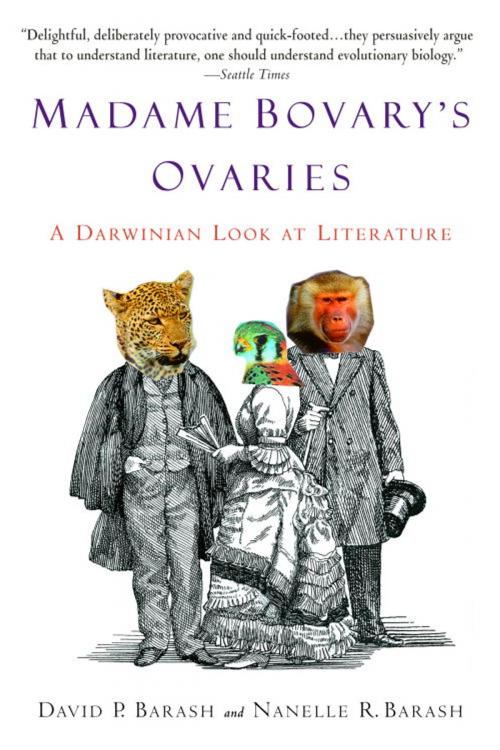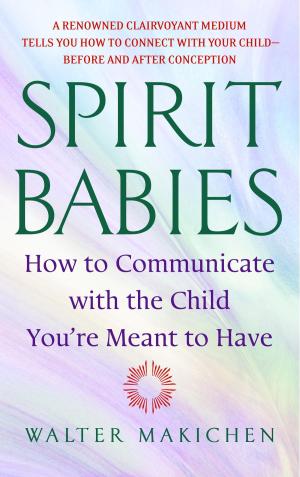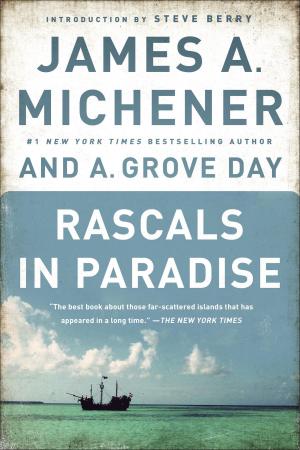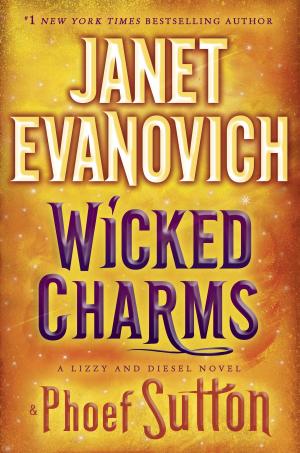Madame Bovary's Ovaries
A Darwinian Look at Literature
Nonfiction, Science & Nature, Science, Biological Sciences, Biology, Fiction & Literature, Literary Theory & Criticism, Social & Cultural Studies, Social Science| Author: | David P. Barash, Nanelle R. Barash | ISBN: | 9780307423160 |
| Publisher: | Random House Publishing Group | Publication: | December 18, 2007 |
| Imprint: | Delta | Language: | English |
| Author: | David P. Barash, Nanelle R. Barash |
| ISBN: | 9780307423160 |
| Publisher: | Random House Publishing Group |
| Publication: | December 18, 2007 |
| Imprint: | Delta |
| Language: | English |
What can elephant seals tell us about Homer’s Iliad?
How do gorillas illuminate the works of Shakespeare?
What do bloodsucking bats have to do with John Steinbeck?
MADAME BOVARY’S OVARIES
A Darwinian Look at Literature
According to evolutionary psychologist David Barash and his daughter Nanelle, the answers lie in the most important word in biology: evolution. Just like every animal from mites to monkeys, our day-to-day behavior has been shaped by millions of years of natural selection. So it should be no surprise to learn that the natural forces that drive animals in general and Homo sapiens in particular are clearly visible in the creatures of literature, from Henry Fielding’s Tom Jones all the way to Helen Fielding’s Bridget Jones. Seen through the lens of evolutionary biology, the witty repartee of Jane Austen’s courting couples, Othello’s tragic rage, the griping of Holden Caulfield, and the scandalous indiscretions of Madame Bovary herself all make a fresh and exciting kind of sense.
The ways we fall in—and out—of love, stand by our friends, compete against our enemies, and squabble with our families have their roots in biological imperatives we share not only with other primates but with an amazing array of other creatures. The result is a new way to read, a novel approach to novels (and plays) that reveals how human nature underlies literature, from the great to the not-so-great.
Using the cutting-edge ideas of contemporary Darwinism, the authors show how the heroes and heroines of our favorite stories have been molded as much by evolution as by the genius of their creators, revealing a gallery of characters from Agamemnon to Alexander Portnoy, who have more in common with birds, fish, and other mammals than we could ever have imagined.
As engaging and informative as a good story, Madame Bovary’s Ovaries is both an accessible introduction to a fascinating area of science and a provocatively sideways look at our cherished literary heritage. Most of all, it shows in a delightfully enteraining way how science and literature shed light on each other.
What can elephant seals tell us about Homer’s Iliad?
How do gorillas illuminate the works of Shakespeare?
What do bloodsucking bats have to do with John Steinbeck?
MADAME BOVARY’S OVARIES
A Darwinian Look at Literature
According to evolutionary psychologist David Barash and his daughter Nanelle, the answers lie in the most important word in biology: evolution. Just like every animal from mites to monkeys, our day-to-day behavior has been shaped by millions of years of natural selection. So it should be no surprise to learn that the natural forces that drive animals in general and Homo sapiens in particular are clearly visible in the creatures of literature, from Henry Fielding’s Tom Jones all the way to Helen Fielding’s Bridget Jones. Seen through the lens of evolutionary biology, the witty repartee of Jane Austen’s courting couples, Othello’s tragic rage, the griping of Holden Caulfield, and the scandalous indiscretions of Madame Bovary herself all make a fresh and exciting kind of sense.
The ways we fall in—and out—of love, stand by our friends, compete against our enemies, and squabble with our families have their roots in biological imperatives we share not only with other primates but with an amazing array of other creatures. The result is a new way to read, a novel approach to novels (and plays) that reveals how human nature underlies literature, from the great to the not-so-great.
Using the cutting-edge ideas of contemporary Darwinism, the authors show how the heroes and heroines of our favorite stories have been molded as much by evolution as by the genius of their creators, revealing a gallery of characters from Agamemnon to Alexander Portnoy, who have more in common with birds, fish, and other mammals than we could ever have imagined.
As engaging and informative as a good story, Madame Bovary’s Ovaries is both an accessible introduction to a fascinating area of science and a provocatively sideways look at our cherished literary heritage. Most of all, it shows in a delightfully enteraining way how science and literature shed light on each other.















